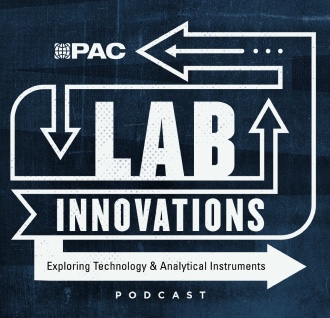Nov-2023
REFuelEU sets rules for SAF Refineries need a plan for success (ERTC 2023)
On September 13, the European Parliament approved the ReFuelEU Aviation Regulation, which increases sustainable aviation fuel (SAF) requirements within the European Union while imposing restrictions on the permissible feedstocks for producing SAF.
Elena Scaltritti
TOPSOE
Viewed : 1680
Article Summary
The long-awaited rules of the game are set. Now refineries and the wider SAF value chain need the strategy and tactics that will deliver increased SAF production.
ReFuelEU Aviation delivers the certainty we have been waiting for. The legislation means EU airports and fuel suppliers must ensure a minimum share of SAF at EU airports, starting at 2% of overall fuel supplied by 2025 and reaching 70% by 2050. The new rules also require a proportion of the fuel mix to be made up of synthetic fuels, starting at 1.2% in 2030 before progressively reaching 35% in 2050. The legislation also provides clear definitions of what can be considered SAF (see box below).
Rules of the game
With ReFuelEU, the future of SAF in the EU is defined and anchored. Promising, yes, but short-term production levels look less reassuring. In 2020, SAF supply was less than 0.05% in the EU, meaning production needs to ramp up significantly… and quickly. We are seeing signs: In 2022, global production tripled but was still less than 0.1% of what is needed for 2050 net- zero targets. Crucially, airlines used every drop of SAF produced in 2022, highlighting the current supply-side challenge.
Where does the obligation for increasing SAF use lie? The short answer, according to ReFuelEU, is across the board. For instance, commercial aircraft operators must buy a yearly average of 90% of their fuel at each EU airport they traffic to and from. Fuel handlers – those involved in fuelling, defuelling, and storage – must facilitate the deployment of Alternative Fuel Infrastructure Regulation (AFIR) and enable aircraft operators’ access to H2 and electricity. EU airports and respective managing bodies are also obliged to take all necessary measures to facilitate the access of aircraft operators to aviation fuels containing minimum shares of SAF, hydrogen, and electricity.
Finally, aviation fuel suppliers must ensure the minimum amount of SAF is available to aircraft operators in EU airports and facilitate access to H₂ and electricity. If they fail to meet this supply, they must – at a minimum – make up for that shortfall in the subsequent reporting period. Non-compliance will again mean a penalty of at least twice the price difference between conventional jet fuel and SAF.
So, aircraft operators have to use it, airports need to provide it, and fuel handlers need to facilitate its deployment. But the dependency is all on SAF producers to come up with the goods. The pressure is on refineries.
How can refineries meet ReFuelEU requirements in short, medium, and long term?
The HEFA (hydroprocessed esters and fatty acids) pathway is used for almost all SAF production today, but feedstock availability constraints and competition from other industries will limit supply. Diversification is needed, and a feasible timeline is identifiable.
In the near term, co-processing can swiftly boost the availability of SAF. Co-processing allows refineries to convert renewable feedstocks into drop-in, biojet fuel at economically competitive prices as they can use existing refining, transport, and storage facilities. Existing refineries see it as a good option as it provides advantages in terms of cost-effectiveness (both Capex and Opex) and carbon footprint reduction and eliminates the need to construct new specialised processing units. In fact, the main change needed for co-processing (up to typically 10%) is the change of catalyst.
However, the volume of SAF that a refinery can produce through co-processing is currently limited to 5% by ASTM D1655.If these limitations are expanded, and additional feedstocks gain ASTM certification, its impact could become more substantial.
In the mid-term, we are likely to see revamped, diversified, or rebuilt plants from existing refineries based around FT-SPK or HEFA. For instance, Topsoe has already worked with Calumet, a refinery in the US which adapted part of its traditional fuel production business via a HEFA revamp to now produce SAF.
We expect more players to explore this approach and to examine how they can use or pivot existing assets and how they might tap into locally available feedstocks. In this timeframe, gasification, Fischer-Tropsch (FT), and hydrocracking will also support increased SAF production.
In the longer term, e-fuels and new pathways – some yet to be ASTM approved, such as methanol-to-jet – will be key for diversification to address feedstock and regional challenges. We should expect to see a variety of feedstocks play a bigger role, such as municipal solid waste, other waste feedstocks, and plastics (assuming ASTM- approved). These will be transformed into SAF through advanced processes such as alcohol-to-jet, pyrolysis, gasification, and FT.
The main bottleneck ahead is not at the refinery level or from technology suppliers, such as Topsoe, but in feedstock availability. Expanding the current list of eligible feedstocks (under Annex IX of RED II) will be critical in meeting the ReFuelEU mandates.
Will the EU be capable of producing enough SAF domestically to meet 2050 ReFuelEU levels?
While achieving 6% SAF by 2030 is most likely reachable, ceteris paribus, there are some major long-term questions ahead for EU SAF producers, including how to meet the strict rules for electricity and CO₂ needed for e-fuels, and if EU-produced 35% eSAF by 2050 is even a possibility.
E-fuels are produced using green hydrogen (electrolysis) and captured CO₂. Given this, they have a significant supply potential as the supply of electricity and CO₂ are not restricted in the same way as other SAF feedstocks.
However, e-fuels are more expensive to produce than HEFA (due to the high price of H₂), they are massively energy-intensive, and they are also reliant on the ramp-up of clean electricity production and carbon capture technology.
The likelihood is that some SAF, especially eSAF, will be produced outside Europe, especially in Asia, the Middle East, and Latin America, and imported to Europe. It is up to EU SAF producers to limit import reliance. It will take a village, however: Partnership will be key across the whole SAF value chain to meet production levels – but underpinning it all, of course, is investment.
The three key industry moves:
υ A long-term uptake commitment from the airline industry at the right price. Here, governments could also play a role in facilitating demand aggregation mechanisms.
ϖ A more risk-taking approach from the financing world. Again, governments can play their part by offering greater support mechanisms to incentivise SAF production, thereby increasing security of supply and relevance of their domestic industrial sector.
ω The cost will need to spread across the value chain, from producers to the airlines to the customer.
And, oh yes, the fourth thing – we will need to spend a busy seven years building new facilities if we are to meet the 6% SAF requirements of 2030. And that’s just the opening gambit.
This short article originally appeared in the 2023 ERTC Newspaper, which you can VIEW HERE
Add your rating:
Current Rating: 3

















